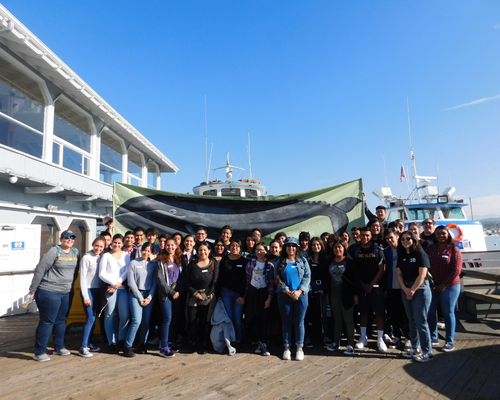
The Marine Protected Area Science Cruise offers underserved students hands-on science field trips.
For some, it’s a chance to get out of class and do something different. For others, it’s a pivotal moment that opens doors to new opportunities and career choices. Either way, local students — many from Title 1 and underserved schools — are playing an important role in protecting the environment.
All of this is happening through the Marine Protected Area Science Cruise, a program that’s been around for a decade now and has given thousands of Southern California junior high and high school students a chance to monitor changes to the Crystal Cove State Marine Conservation area. In other words, a field trip on a boat with hands-on science projects and valuable application in the real world.
The concept originated with Crystal Cove Conservancy in 2012 at a time when marine protected areas (MPAs) were going into effect in Southern California thanks to the state’s Marine Life Protection Act. MPAs protect the diversity of marine life, habitats and ecosystems by limiting fishing and other activities in the area in the name of conserving the environment and providing specific reference points.
Crystal Cove Conservancy, a nonprofit on a mission to restore Crystal Cove and educate the next generation of environmental stewards, wanted to keep track of the new restrictions’ impact. Since collecting data is an involved and costly process that was out of their reach, they turned to Davey’s Locker and Newport Landing Whale Watching in Newport Beach for a partnership that would utilize sport-fishing boats to take kids out on the water and take advantage of new regulations to teach them about the ocean and the significance of MPAs. Students got educational field trips that are almost always funded by Crystal Cove Conservancy, Newport Landing and Davey’s Locker got extra business and use of their fishing boats, which were not as busy during off-season, and the conservancy as well as University of California, Irvine researchers got scientific data they otherwise wouldn’t have been able to obtain.
“It was like a win-win for everybody,” said Jessica Roame, education programs and social media manager at Newport Landing Whale Watching in Newport Beach. “It’s an interesting collaboration that I’ve never seen anywhere else in the country.”
A typical cruise takes three hours during which the students are broken up into three groups and use specific scientific equipment to monitor plankton, fish and water quality just off of Crystal Cove State Park. They record and then discuss their findings, which researchers later use to evaluate fish population, the effectiveness of MPAs and more. The last hour is dedicated to whale and dolphin watching.
“It’s really kind of a nonstop action-packed STEM-heavy field trip,” Roame said. “It’s kind of helping fuel a lot of different science-minded projects within our local community as well as helping understand how the MPA is doing.”
Sara Ludovise, vice president of Programs and Strategy at Crystal Cove Conservancy, said the program marries the organization’s mission in both conservation and education as the trips are about so much more than just enjoying a day on the water.
“It helps us understand better how the system has changed,” she said. “And especially as we move into the future and climate change has more of an impact on our local ecosystems and local waters, that’s going to become more and more important to have these long-term databases.”
Now, with thousands of students going out in the water, researchers are starting to see the results, one of them is an increase in the number of fish species in the protected area.
“It’s been really interesting to see because ecological trends take a long time,” Ludovise said.
The pilot program started with about five student groups and has grown over the years to become Crystal Cove Conservancy’s flagship education program. At its peak in 2019, more than 70 groups, each averaging 30 to 40 students, went out on the water. As word spread, schools from Los Angeles, San Bernardino, San Diego counties and other places started coming down to Newport Beach. After a brief break in 2020 when the pandemic forced the program to go virtual, the boats are back and running again on weekdays between September and end of May and teachers are welcome to apply for their classes to participate.
“It’s a lot of students that we impact throughout the year, and we have set up a really great teacher learning community within all of the teachers that we work with,” Roame said. “Many of them are returning year after year to come out on the boat and get this year’s class on the water.”
One of those teachers is Dolores Dang-Wright who’s been bringing her Dana Hills High School students onboard since the program’s maiden voyage. The AP environmental science teacher prepares her 11th- and 12th-graders in class before they arrive for the cruise so they’re ready to handle the equipment and know what to look for.
“What’s really good is it’s hands-on. They get to go outside,” she said. “It’s neat to have them be able to actually do hands-on and see it. They get excited when something unusual comes up.”
Daryth Morrissey teaches seventh and eighth grade at Vista View Middle School, a Title 1 school in Fountain Valley. Thanks to Crystal Cove Conservancy funding (each cruise costs $870 for up to 42 passengers on the boat), she’s been taking her students on the cruises since 2016.
“Basically, the only way I get to go on field trips,” Morrissey said, adding that afterward her students write thank-you notes to donors who make it possible.
Morrissey can’t say enough good things about the program, from the curriculum she gets sent in advance to the measurements done onboard, to the dolphin and whale watching portion of the day.
Related Posts:
- Marine Life and Coastal Adventures in Orange County
- Educational and Entertaining Outdoor Experiences for Your Kids
- Keeping Our Oceans Clean
“This is the first time a lot of my students have been in an ocean on a boat, so it’s really opening a whole new world to them,” she said. “They love it. They absolutely love it.
“I don’t think there’s anything better than hands-on, real-world learning. It just makes marine biology and science come alive and to see 12- and 13-year-old kids handling this equipment, I think it just really opens their minds and hearts to careers that they could have.”
Not all students get off the boat ready to pursue marine biology further, but for some, the cruises are a life-changing experience that helps them see a path for the future.
“I feel like there’s nothing more satisfying than having someone come up to you and say ‘I really want to study marine biology now,’” said Erick Valdez, education manager at Crystal Cove Conservancy.
That’s what happened to Leanne Sutton, who went on a cruise with her Esperanza High School AP environmental science class in 2018 when she was 17 years old.
“I’ve never really done anything like that before,” said Sutton, recalling the hands-on data research and sample collection she did on the boat that was not only enjoyable and interesting but helped the community as well. “That just solidified what I wanted to do as far as my career.”
Two years later, she reached out to Newport Landing about any job openings and now is a customer service representative with the company, assisting other students with the program.
“A lot of the kids have never really been out before, they’ve never really seen anything like it,” she said. “Once we explain it (MPA) to them, they kind of have more of an appreciation for the area.”
And that’s exactly what the program founders are going for — getting the kids to understand what an MPA is and why they should care.
“These students are going to be the next policymakers, lawyers, environmental activists, scientists,” Roame said.
Although the unique program has been a success for everyone involved, Roame said they haven’t had much luck convincing similar organizations and companies along the coast to replicate it — something she said she’d like to see change one day.
“There are not a lot of sport-fishing companies that you’ll find that are willing to work with students in this way,” she said.
Meanwhile, they’re looking at increasing the number of boats designated for the cruises to allow even more students and teachers to participate. And one day, the general public might also have a chance to try their hand at citizen science data collecting and helping the environment.
By Magda Hernandez

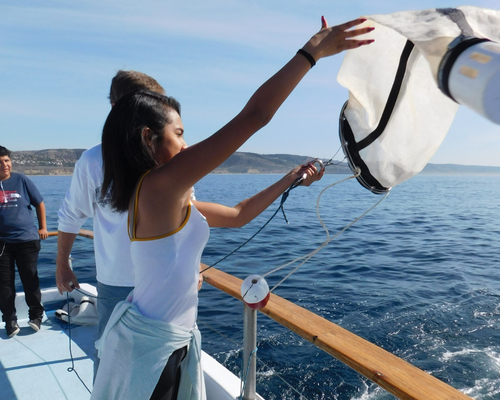
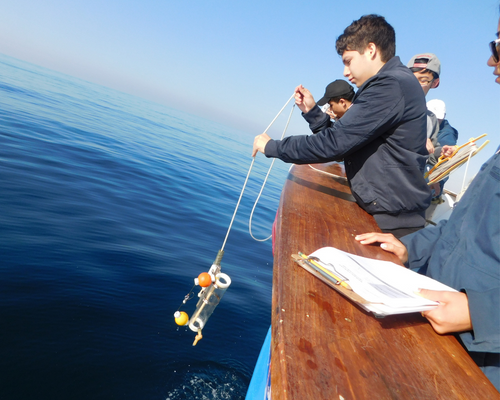


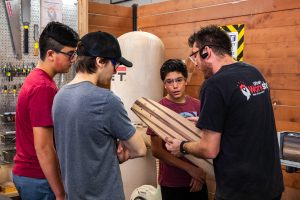



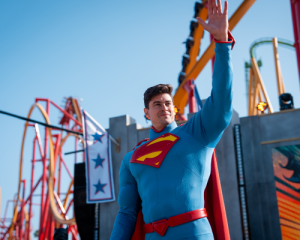

Leave a Reply